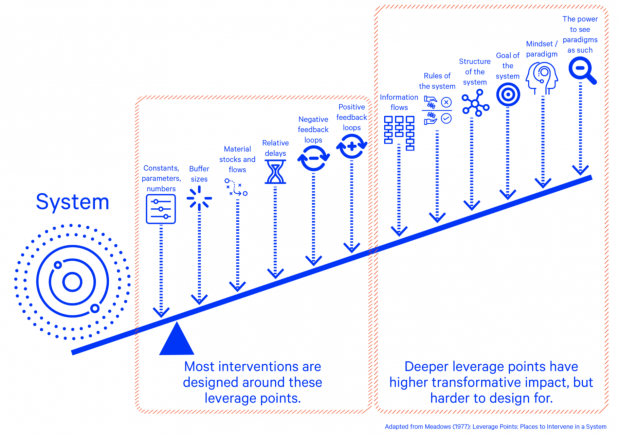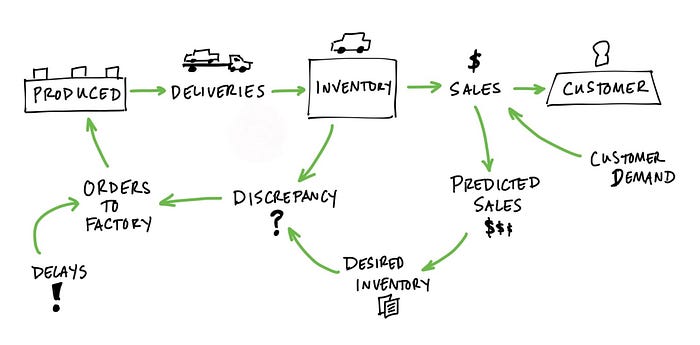4 women who made modern design more life-centred
Supporting Women’s History Month, I celebrate these 4 women whose work made a massive impact on me and the world by redirecting design thinking to be more planet-friendly and socially just

While many modern design innovations of industrialised nations have raised parts of the world out of recurring human famines into higher standards of living and education, increased human life expectancy, and improved poverty and sanitation for some, decades of the mass production of these innovations have forced others out of traditional living and into becoming a resource of abundant inexpensive labour and industry for the Global North’s technological exports.
Life-centred design emerges today across the world in varying forms, but all lean toward one purpose—to transition the way humans exist through design to be in symbiosis with the Earth and all its life forms and systems.
I celebrate these four women who have contributed greatly to the emergence of life-centred thinking through their work with alternate economic models and holistic ways of seeing the world, and who have inspired me personally to be a better designer:
- Ellen Macarthur’s articulation of circular design which reimagines our current take-make-waste design approach to one that reuses and recycles everything to reduce waste and pollution
- Kate Raworth’s articulation of the Doughnut Economy which aligns the sustainable thinking of circular design with socially aware thinking for the sustainable and thriving lives of people
- Donna Meadows' articulation of system thinking which enables designers to zoom out from their UX and product to see the ecosystem of people and places and the planet that it's a part of so they can embed circular and Dougnut thinking into their products and websites
- Monika Sznel’s ground-breaking environment-centred design tools empowering and inspiring designers to implement systems, circular, and Doughnut thinking in their process
Ella MacArthur and The Circular Economy
After sailing solo around the world in 2005 at the fastest time, Dame Ellen MacArthur returned with a new perspective on how the world worked.
After spending 71 days alone at sea and completely reliant on the limited food, fuel, and supplies she’d taken with her, Ellen realised humanity and its economy was no different — completely reliant on the finite resources, but which it was extracting and disposing of without regard.
After talking with business leaders, engineers, and other experts, she set up the Ellen MacArthur Foundation to help accelerate the transition to a circular economy.
‘Through design, we can eliminate waste and pollution, circulate products and materials, and regenerate nature, creating an economy that benefits people, business and the natural world.’
Principles of circular design:
- Design out waste and pollution
- Keep products and materials in use
- Regenerate natural systems
A key output from Ellen was the Butterfly Diagram, a reimagining of a more technical diagram by McDonough & Braungart in 2010, which beautifully articulated the circular flows of repair, reuse, refurbish, remake, and recycling of materials, to be achieved through the circular redesign of products and systems.

Among many other tools and resources, the Ellen MacArthur Foundation also produced The Circular Design Guide in 2017 in a collaboration with global design company IDEO.
Packed with methods, tools, examples, and advice, the guide is an excellent resource for anyone wanting to start experimenting with circular design and help shift design from its linear take-make-waste mentality to a reusable and restorative circular mindset.
Circular thinking can be applied in digital design in many ways, as this diagram shows in which the circular product life cycle of a physical product is translated into related components for digital design to focus on.

About and resources:
- About Ellen Macarthur
- The Ellen Macarthur Foundation
- The Circular Design Guide
- Free online course — https://circulab.academy/courses/activate-circular-economy/
- A guide to get started — https://www.circulardesignguide.com/get-started
Kate Raworth and The Doughnut Economy
The Doughnut Economy was introduced by acclaimed economist Kate Raworth in her 2017 book Doughnut Economics as an alternative to the take-make-waste economy[i].
The Doughnut essentially represents a ‘safe operating zone’ between its inner and outer rings. The outer ring represents the nine planetary boundaries mentioned early that we should not overreach. The inner ring represents twelve ‘basics of life’ that we must ensure all peoples remain above to form a safe, just, meaningful, and thriving existence for all.

The space in between these two thresholds — the Doughnut — represents the target area where all activities should be focused in terms of outcomes.
The Doughnut is currently used as a tool to assess development’s impact on ecological and social issues, to plan for improvements, and to hold policymakers and citizens accountable (Figure 2 — The Doughnut Economy).
The Doughnut’s twelve basics of life were derived from the social priorities specified in the United Nation’s 2015 Sustainable Development Goals (SDGs):
- Sufficient food
- Clean water and decent sanitation
- Access to energy and clean cooking facilities
- Access to education and to healthcare
- Decent housing
- A minimum income and decent work
- Access to networks of information and to networks of social support
- Gender equality
- Social equity
- Political voice
- Peace and justice
Evolved over decades of work by the UN in conjunction with over 170 countries, the SDGs are 17 interconnected global goals that form ‘a shared blueprint for peace and prosperity for people and the planet, at present and into the future’. The UN aims to mostly resolve these by 2030, which is around the same time the Stockholm Resilience Centre argues the world will run out of time to be able to reduce the impacts of man-made climate change.
The Doughnut Economics Action Lab (DEAL), co-founded by Kate Raworth, is part of the emerging global movement to rethink and reconfigure economic thinking by supporting regenerative and distributive projects of governments, communities, cities, businesses, and education. Its emphasis on sustainability and inclusiveness provides a promising framework to evolve modern design out of its three key problems.
Many global initiatives are adopting the Doughnut Model, and more and more businesses are incorporating the SDGs through the Environmental, Social, and Corporate Governance framework (ESG). ESG is a proposed metric released by the World Economic Forum in September 2021 for organisations to set and measure their sustainability improvements, support to societal movements, and governance. Put simply, organisations set commitments aligned with global goals, like the SDGs, from all three areas — environmental, social, and governance.
This is important for life-centred design because it means the projects of product/experience designers working for a business with an ESG commitment are contributing to the shift toward a sustainable, regenerative, and fair world.
About and resources:
- About Kate Raworth
- Doughnut Economics Action Lab
- About Doughnut Economics
- How to expand Design Thinking for a better tomorrow
Donella Meadows and Systems Thinking
Shifting from our linear economy to a circular one requires systemic solutions. Considering the impacts of the true lifecycle of a product, and how everything is connected, takes designers into systemic thinking.
Donella Meadows, American environmental scientist and author of Thinking in Systems: A Primer in 1993, introduced the concept of leverage points as points in a system where small changes can create big impacts[i].

Systems thinking is a mindset and a set of tools to holistically view the complexity of our world as interconnected and interdependent systems, to see beyond the apparent and linear views, and to identify the root causes and leverage points of change.
It is opposite to the currently dominant view that sees things as many separate and independent parts — a view that can oversimplify perspectives and see parts out of context, and sabotage attempts to improve a system to actually make them worse.
Circular design uses systems thinking to look beyond the product or service, and to see the connections of our creations and processes along the entire lifecycle, so we may intervene in ways that optimise the entire system.

Systems thinking, however, can be messy, complicated, and overwhelming, which risks over-analysis, looking too broadly, and losing focus. But the ability to map holistic views and relationships is more important now with current unprecedented challenges making our wicked problems larger and more complex.
Product Designer and MHCI+D alumni, Tyler La, suggests designers should practice becoming comfortable and confident with uncertainty by defining a certain level of uncertainty as acceptable to move forward.
Systems Mapping is a powerful visual modeling tool to capture the system’s elements and interconnections to create a shared vision, foster collective intelligence, and help identify leverage points for change. System maps are often used during a discovery phase, or for big problems where you don’t know where to start.
For digital designers, systems mapping can be used to extend journey maps and service blueprints to zoom out and diagnose a part of the user journey, supply chain, end-of-use phase, etc. to identify non-humans and non-users impacted by a design.
About and resources:
- About Donella Meadows and her book
- A good explainer article — https://everythingnewisdangerous.medium.com/why-every-designer-should-be-a-systems-thinker-388e4fb7293b
- Systems mapping for UX
- Circular systems toolkit
- Why designers should find the balance between systems thinking and design thinking
- Why every designer should be a systems thinker
- An excellent course (I took this and can recommend it) — https://www.unschools.co/systemsthinkingcourses
Monika Sznel and Environmental Design
Monika Sznel is a design anthropologist, UX researcher, and service designer in Poland.
In May, 2020, Monika began publishing her work iterating human-centred design to be ‘better fitted for the environmental, social and technological context in which we live’, to protect earth’s environmental boundaries as defined in Raworth’s Doughnut Economy model, and to help transition the great amount of talk about sustainability into optimistic, data-driven and coolheaded action.
Monika environmentally-upgraded versions of two human-centered design tools the Business Canvas and the User Persona into tools that translate the systems thinking of the Doughnut, Circular Design, and Systems Mapping into tools for designers to implement at the micro-level, including digital.
The Actant Mapping Canvas—identify non-human stakeholders
Actant Mapping Canvas enables designers to identify all peoples, animals, and environments as legitimate stakeholders in the design process.

The Non-human Persona — including non-human stakeholders
Once non-humans are identified and understood, Monika proposed the use of personas to represent them and their needs throughout the design process.
While not the first to design for non-human needs in modern human-centred design, Monika’s Non-human Persona tool and article were articulated so well that they inspired many UX, UI, and service designers to start experimenting with non-human personas and how to know, consider, and design for non-human needs.

About and resources:
- Monika’s blog
- Monkia’s Actant Mapping Canvas
- Monika’s non-human persona
Women’s History Month is an annual declared month that highlights the contributions of women to events in history and contemporary society. It is celebrated during March in the United States, the United Kingdom, and Australia, corresponding with International Women’s Day on March 8, and during October in Canada, corresponding with the celebration of Persons Day on October 18—Wikipedia
More from Damien…
Explore Damien’s two design innovation labs:
- Life-centred Design Lab — expanding human-centred design to include nature and invisible communities
- Future Scouting — Designing life-centred, values-driven future tech products with speculative design
Get practical with tools and courses:
- Life-centred Design Books and Toolkits
- Life-centred Design Courses
- Life-centred Design Innovation Cards
Follow Damien on Medium for more fringe design thinking and experiments.

